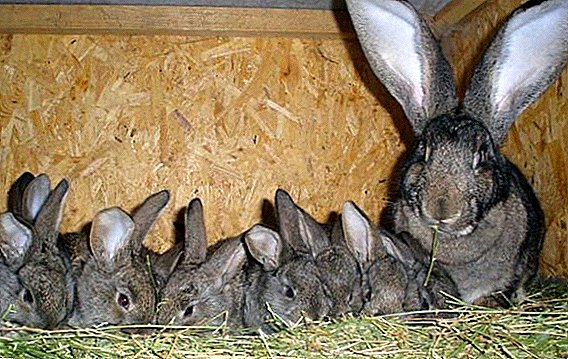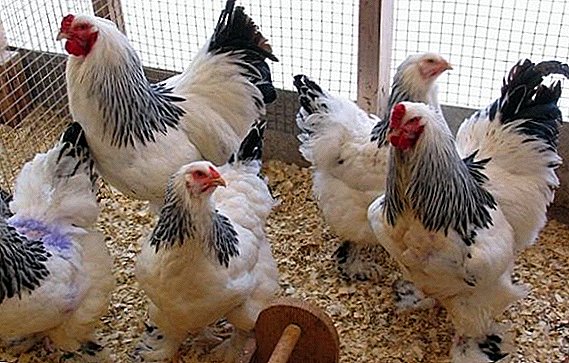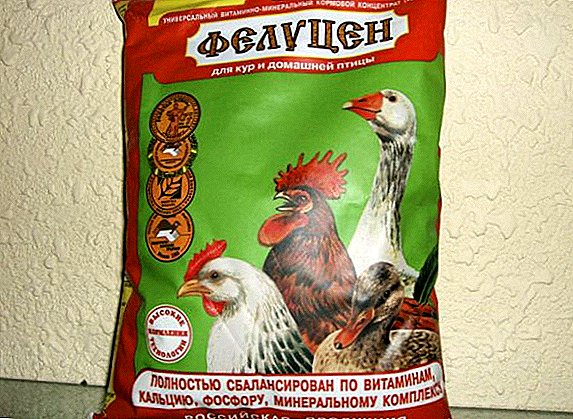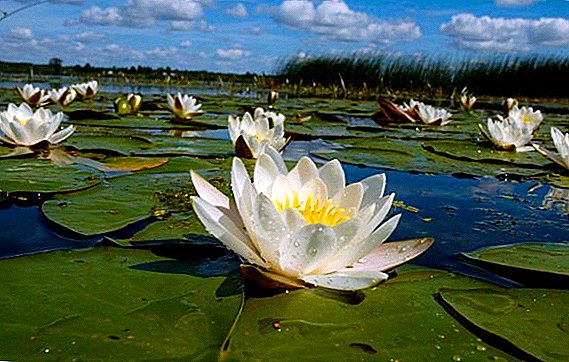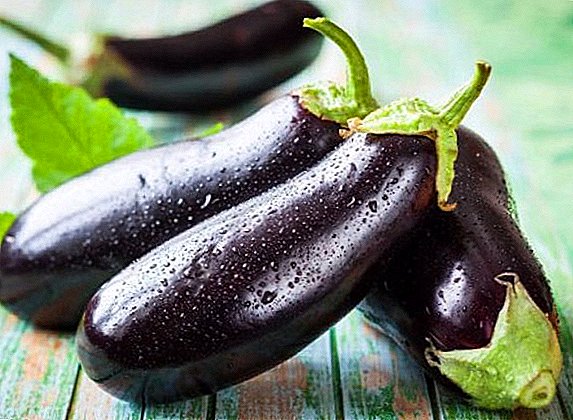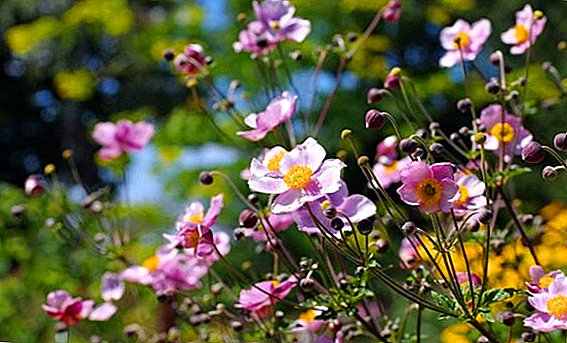 Anemone (Annemone lat.), Also known as anemone, is a very attractive decorative spring perennial flower (however, some types of anemone bloom in summer and even in autumn). The area of growth is practically all countries of the northern hemisphere of the Earth.
Anemone (Annemone lat.), Also known as anemone, is a very attractive decorative spring perennial flower (however, some types of anemone bloom in summer and even in autumn). The area of growth is practically all countries of the northern hemisphere of the Earth.
Did you know? The name of the plant can be translated as "the daughter of the winds" (from the Greek "anemos" - wind), hence the Russian version - "anemone", since the anemones of the delicate flower petals tremble and fluctuate from the slightest breath of the spring wind.Anemone has in its family more than a hundred species and varieties, and sometimes these plants are completely different from each other, therefore, it is rather difficult to give a general description of anemones.
 Some types of anemone are completely unpretentious in growing, others, on the contrary, require careful and careful care, some have tubers, others - rhizomes, etc.
Some types of anemone are completely unpretentious in growing, others, on the contrary, require careful and careful care, some have tubers, others - rhizomes, etc.We advise you to learn about the therapeutic properties and contraindications of anemone.
Site selection and preparatory work
Growing anemone in the garden requires a preliminary selection of a suitable place and preparation of the soil for planting. Anemone will feel better in a shaded and protected from the wind place, because this tender plant suffers greatly from drafts and harsh winds.  It is also important that the anemone be given enough personal space, since the root system of this plant is very fragile compared to the rapidly growing green mass, and too aggressive neighbors can suppress the roots of the anemone.
It is also important that the anemone be given enough personal space, since the root system of this plant is very fragile compared to the rapidly growing green mass, and too aggressive neighbors can suppress the roots of the anemone.
The soil of the anemone prefers moist, light and well aerated, slightly acidic or neutral. The plant does not like stagnant water, so drainage is also very important.  For the cultivation of anemone in the open field the most optimal is loam, the anemone will feel good also on deciduous peaty soil.
For the cultivation of anemone in the open field the most optimal is loam, the anemone will feel good also on deciduous peaty soil.
If the composition of the soil does not meet the above requirements, the situation can be corrected: for greater loosening, sand is added to the soil before planting, to reduce acidity (the pH should be in the range from 7 to 8) - dolomite flour or wood ash.
Preparatory work with planting material
Anemone can be propagated by seed and vegetatively. The choice of method depends on many factors, primarily on the variety of anemones and climatic conditions (for example, in some species of anemone in the absence of pronounced temperature differences in the cold and warm season, seeds develop so slowly that they germinate only in the third year). 
How to prepare the seeds of anemone before sowing
Poor germination of anemone seeds can be somewhat reduced if you carry out preparatory work with them. Otherwise, planting anemone last year’s seeds will cause no more than a quarter of the material to germinate.
Improve the result will help reception, called "stratification". It denotes artificial creation for seeds of conditions similar to natural wintering.
To do this, seed should be placed in a mixture of sand and peat (one to three ratio), then moisten the resulting mixture and let stand for several days until the seeds swell.  Then the seeds are moistened again, some more mixture of sand and peat is added, and transferred to a cool place where the material is kept until the seeds hatch.
Then the seeds are moistened again, some more mixture of sand and peat is added, and transferred to a cool place where the material is kept until the seeds hatch.
The last stage - the container with the seeds is taken out into the open air and buried in the ground or snow "for dosing". Above the place where the seeds are buried, you need to cover from the cold, using straw, sawdust or other material at hand.
After the onset of spring, germinated seeds can be planted in containers for seedlings.
Important! Stratification must be carried out if the sowing of seeds is carried out in the spring. Cold hardening the seeds before the autumn planting is not necessary - it will happen by itself, because the seeds remain in the ground for the winter.An accelerated method of preparing seeds for sowing is sowing them into boxes filled with soil suitable for anemone, which are buried in the ground in the open air until spring.
 Then the boxes are dug, and the plant is transplanted.
Then the boxes are dug, and the plant is transplanted.How to prepare anemone tubers before planting
Types of anemone with tuberous rhizomes, for example, crown, tender, Apennine, Caucasian, etc., multiply by dividing the tuber.  This procedure is carried out in a rest period of anemone, best of all - at the end of summer. The tuber must be divided so that each part has two or three full buds and a segment of the tuber itself.
This procedure is carried out in a rest period of anemone, best of all - at the end of summer. The tuber must be divided so that each part has two or three full buds and a segment of the tuber itself.
In order for the anemone to give confident and healthy shoots, tuber preparation should be carried out before proceeding directly to planting. Many gardeners plant anemone tubers without preparation, or, before planting, soak the tubers in a growth promoter. Both are serious mistakes.
A large amount of moisture is detrimental to the tuber, you can help it to swell by wrapping the tuber in a damp cloth or deepening it in moist sawdust for about half a day. After the time has elapsed, the swollen tubers are laid out in containers filled with wet sand, directly on the surface, covered with glass or film and placed for a week in a cool and darkened place.
Periodically, the film must be removed so that the tubers receive enough fresh air. When sprouts emerge from a tuber, it can be planted directly into open ground or in a flower pot.
You will also be interested to learn about the cultivation of ornamental plants such as: celosia, ageratum, jascoli, saberweed, mountaineer, perilla.If after a week the tuber has not sprouted (this time for each variety of anemone, and even for each instance of the plant of the same variety may be different), it should be left under the film until germs appear.
Planting rules anemones
Depending on the type of anemone planting and subsequent care of the plant can vary significantly.  Spring varieties of anemone have a short life cycle: in the middle of spring the plant wakes up, by the end of spring it blooms and already in the middle of summer it falls into a state of rest.
Spring varieties of anemone have a short life cycle: in the middle of spring the plant wakes up, by the end of spring it blooms and already in the middle of summer it falls into a state of rest.
However, when creating favorable conditions, it is possible to ensure that the anemone will remain green until autumn.
However, in general, such varieties of anemone after they have bloomed, you can begin to divide and plant in order to avoid uncontrolled growth.  Anemone, having a rhizome, seated, on the contrary, in the spring: the autumn transplant such plants are experiencing very badly. Autumn is a time for planting anemone tuberous species.
Anemone, having a rhizome, seated, on the contrary, in the spring: the autumn transplant such plants are experiencing very badly. Autumn is a time for planting anemone tuberous species.
Planting seeds
Anemone seeds can be planted in spring or autumn. Some gardeners believe that when choosing autumn sowing, only seeds collected this year should be used.
Important! Anemone seeds should not be too deep. In order for fragile shoots to break through to the surface, the layer of soil that they have to overcome must be minimal - the seeds just enough to lightly powder with the soil, leaving them almost on the surface.
When sowing in autumn, the first shoots of anemones appear as soon as the snow melts. However, winter sowing keeps a serious problem for young plants: too wet after winter, the soil can completely destroy the shoots.  This problem can be avoided with the help of the spring planting of anemones sprouted during the winter in the manner described above. The anemone planted with the help of seeds does not bloom for the first two years.
This problem can be avoided with the help of the spring planting of anemones sprouted during the winter in the manner described above. The anemone planted with the help of seeds does not bloom for the first two years.
Planting tubers
It is believed that it is somewhat more difficult to propagate the anemone with tubers than with seeds. However, with the observance of technology, this process gives a good result.
If the tubers are properly prepared for planting and germinated, there is no problem with determining the growth point: the tuber is placed in the ground with the seedling upwards.  It is undesirable to plant unprepared tubers, but if, nevertheless, you decide to try, you need to lower the tuber into the ground with a sharp end downwards, the flat one should be on top.
It is undesirable to plant unprepared tubers, but if, nevertheless, you decide to try, you need to lower the tuber into the ground with a sharp end downwards, the flat one should be on top.
In the case when the shape of the tuber has no pronounced flat and sharp sides, you can put it in the ground sideways, so as not to be mistaken.
The pit for the tuber is dug out to a depth corresponding to a double height of the tuber and with a diameter of 30-40 cm.  Before laying the tuber at the bottom of the fossa is placed organic fertilizer - a little ash and humus. After burying, the ground should be lightly tamped and watered abundantly.
Before laying the tuber at the bottom of the fossa is placed organic fertilizer - a little ash and humus. After burying, the ground should be lightly tamped and watered abundantly.
If the anemone is planted in a pot, it is placed in a cool place - the plant becomes too weak from overheating, and the tuber may start to rot. After the final rooting, raising the temperature of the plant is no longer scary.
As well as an anemone, tubers multiply host, doronicum, brunner, lithnis, acanthus, feather grass, uvulyaria, physiology.Transplant the plant in the open ground when the external temperature equals room temperature. While the anemone has not experienced the stress of transplantation, you need to ensure that the plant is not exposed to direct sunlight.
Seasonal care for anemone
For the normal development of most species of anemone need not so much: they are generally unpretentious and not too susceptible to pests and diseases.
How to conduct watering
In growing anemones, the main thing is that during the entire growing season the plant does not dry out, and this applies not only to the soil, but also to air. Due to lack of moisture, bud formation slows down and flowering occurs sluggishly.  On the other hand, an anemone does not tolerate waterlogging - from this rhizome or tubers begin to rot. Since the balance in moistening is not easy for an inexperienced gardener, it is recommended to plant an anemone on the elevated parts of the site and to drain the landing site well.
On the other hand, an anemone does not tolerate waterlogging - from this rhizome or tubers begin to rot. Since the balance in moistening is not easy for an inexperienced gardener, it is recommended to plant an anemone on the elevated parts of the site and to drain the landing site well.
In addition, to protect the anemone from drying out, the area should be mulched, for example using peat or fallen leaves. The layer of mulch should be thick enough - up to 5 cm.  As for the seasonal characteristics of irrigation, in spring plants can be watered no more than once a week, in summer, if it is not very hot, moderate irrigation is necessary (the exception is crown anemone, which requires abundant watering during flowering). However, during the dry season, anemone should be watered regularly, sometimes even daily, before or after sunset.
As for the seasonal characteristics of irrigation, in spring plants can be watered no more than once a week, in summer, if it is not very hot, moderate irrigation is necessary (the exception is crown anemone, which requires abundant watering during flowering). However, during the dry season, anemone should be watered regularly, sometimes even daily, before or after sunset.
Weeding and loosening the soil
The root system of the anemone is very fragile, so the proximity of weeds for the plant is destructive. Weeding can also damage the roots of the anemone, so you need to get rid of weeds manually.
We advise you to learn how to get rid of such weeds as: nettle, birch bindweed, euphorbia, dandelions, field sow thistle, dodder, slyt, quinoa, purslane.Loose soil protects the plant from drying out and provides respiration of the root system, therefore, if the area with the anemone is not mulched, the procedure must be carried out continuously.
How to conduct dressing
In the period of flowering anemone need additional feeding organic (preferably liquid) or complex fertilizers.  However, it is necessary to refrain from applying for this purpose fresh manure, this type of feeding anemone does not like. In the fall, you can fertilize the site with mineral additives, however, if the soil was properly fed before planting the anemone, in the first year this is enough for the plant.
However, it is necessary to refrain from applying for this purpose fresh manure, this type of feeding anemone does not like. In the fall, you can fertilize the site with mineral additives, however, if the soil was properly fed before planting the anemone, in the first year this is enough for the plant.
Garter tall anemone
Some varieties of anemones are quite tall (can reach a height of one and a half meters).  So that such plants do not fall on the tracks and do not suffer too much from sudden gusts of wind, they must be tied up using special pegs or natural supports (fence, pergola fencing, etc.). In particular, the castellated anemone, Caucasian, tender, Apennine, needs an additional garter.
So that such plants do not fall on the tracks and do not suffer too much from sudden gusts of wind, they must be tied up using special pegs or natural supports (fence, pergola fencing, etc.). In particular, the castellated anemone, Caucasian, tender, Apennine, needs an additional garter.
Transplanting and dividing the bush
Varieties of anemone with a vertical rhizome, can be propagated by dividing the bush. Two periods are suitable for this: immediately after winter, as soon as the plant begins to throw out young shoots, or, on the contrary, the end of summer - the end of the dormancy cycle (it is believed that the first method gives the best results).  The bush should be divided so that each part has a fragment of rhizome and a ground element with at least two buds. Such parts take root quite easily if they are carefully planted horizontally in light and well-fed soil (planting depth is about 5 cm).
The bush should be divided so that each part has a fragment of rhizome and a ground element with at least two buds. Such parts take root quite easily if they are carefully planted horizontally in light and well-fed soil (planting depth is about 5 cm).
After three years, the plant is fully formed. By splitting the bush, anemone propagates that has reached a mature age (at least five years old).
The same rules apply for routine transplantation of root shots anemones. In the spring, when the first shoots appear on the surface, the anemone is dug out and transplanted to the right place.  It should be borne in mind that these types of anemone transplant transplant rather difficult, after the procedure, the plant may die. The most difficult to transplant hybrid anemone.
It should be borne in mind that these types of anemone transplant transplant rather difficult, after the procedure, the plant may die. The most difficult to transplant hybrid anemone.
Short rooted anemone (for example, narcissist flowering, long-haired) transplant and divide transfer quite easily.
Combination and use in landscape design
Any anemone, regardless of the type - a real decoration of the flower bed. The use of several varieties in various combinations will allow you to create a completely luxurious ensemble.  Sky-blue, white, red and variegated flowers allow you to realize any fantasy landscape designer.
Sky-blue, white, red and variegated flowers allow you to realize any fantasy landscape designer.
Did you know? There is a legend that from every drop of blood spilled on the ground by the heroes of the Maccabean dynasty, an anemone grew.Such a romantic story, of course, is fiction, but it emphasizes the unprecedented beauty and tenderness of this amazing plant.
Low-growing species of anemone fit perfectly into the general appearance of the alpine slide, can also be used as a ground cover plants to decorate a rocky area.
Check out the top ten spring flowers for the country bed.High varieties stylishly complement the thickets of shrubs in the garden. A felt tall anemone in a group planting will decorate an artificial pond, pond or stream.
When the spring anemone is blooming, the primroses, tulips and daffodils, which are familiar to everyone, are located quite differently. Violets, primroses and even peonies (by the way, relatives of anemones) also acquire a special charm against the background of anemones.  The anemone planted along the paths, as well as under the fruit trees, looks exquisitely.
The anemone planted along the paths, as well as under the fruit trees, looks exquisitely.
For anemone blooming in later periods, autumn flowers such as asters and chrysanthemums can be considered successful partners. Planting anemones next to a fern has an incredible effect.
A good bonus when planting an anemone is its ability to grow quite quickly: the fact that at first are separate flowers, in subsequent years turns into bright flowering beds.
How to store tubers in winter
Whether it is necessary to dig up anemones for the winter depends on the climatic zone in which they are grown. In the middle band, the plant is better not to leave for the winter in the open field.
Digging of tuberous varieties of anemones is made with the arrival of autumn and the completion of the vegetation process, when the stems and leaves of the plant are completely dried.  Tubers should be dried, decomposed into dry paper or linen bags and placed in a dark and cool place for storage (ideally, a cellar or cellar).
Tubers should be dried, decomposed into dry paper or linen bags and placed in a dark and cool place for storage (ideally, a cellar or cellar).
Better yet, prikopat them for the winter in the sand or peat. The temperature at the storage site of tubers in winter should not fall below three and rise above six degrees Celsius (it can be warmer in the fall, up to + 20 ° C).
Learn also how to preserve dahlia, gladiolus and calla tubers in winter.It happens that the ground part of the anemone is completely dried, and finding a place to plant it to dig up the tuber is difficult.
In this case, you can simply cover the area with a thick layer of sawdust, foliage, peat or sand, and then wrap it over with a film, sacking cloth or agrofiber (however, it is desirable that the cover still be waterproof).  However, it is still recommended to dig anemone tubers for the winter: firstly, this will prevent the plant from freezing, and secondly, it will accelerate the spring flowering if the tubers are well prepared and germinated before planting.
However, it is still recommended to dig anemone tubers for the winter: firstly, this will prevent the plant from freezing, and secondly, it will accelerate the spring flowering if the tubers are well prepared and germinated before planting.
Anemone - the collective name of many plants, differing from each other in appearance, as well as in demanding and capriciousness.
And yet, in general, it can be said that the cultivation of this very beautiful plant in most cases (except for some particularly capricious varieties) is not associated with great difficulties and quite feasible even for not very experienced flower lovers.


